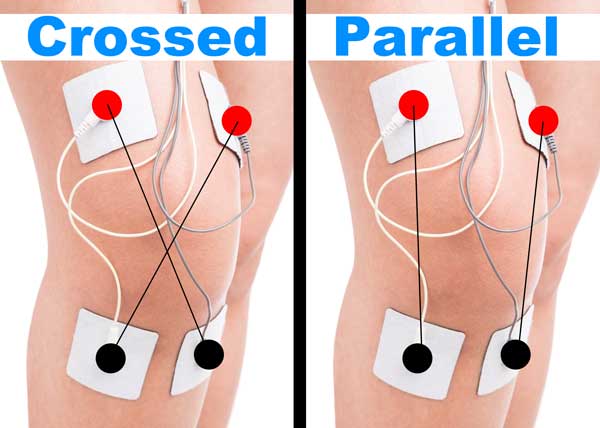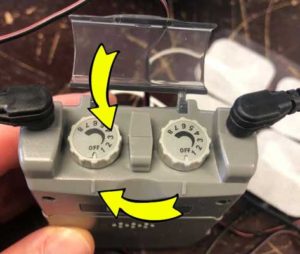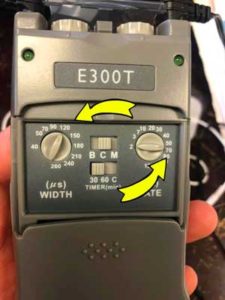BEST Tens Placement for Knee Pain
Is TENS a Good Way to Reduce Knee Pain?
Transcutaneous Electrical Nerve Stimulation (TENS) is a non-invasive, drug-free method for pain relief that has been widely used to manage various types of pain, including knee pain. TENS therapy involves sending low-voltage electrical pulses through the skin to stimulate nerves, which may help to block pain signals from reaching the brain and promote the release of endorphins, the body’s natural painkillers 1. But, is TENS a good way to reduce knee pain? Let’s explore the effectiveness, potential benefits, and limitations of TENS therapy for knee pain.
Effectiveness of TENS for Knee Pain
Several studies have investigated the efficacy of TENS therapy for reducing knee pain, particularly in cases of osteoarthritis, a common cause of knee pain [2]. A systematic review and meta-analysis of randomized controlled trials found that TENS therapy provided significant pain relief in patients with knee osteoarthritis compared to a placebo treatment [3]. Another study reported that TENS, when combined with other treatments such as exercise and manual therapy, could effectively reduce pain and improve function in individuals with knee osteoarthritis [4].
While the evidence suggests that TENS can be effective for knee pain relief, the extent of its effectiveness may vary depending on factors such as the intensity and frequency of electrical stimulation, electrode placement, and individual patient characteristics [5]. Therefore, it is crucial to consult with a healthcare professional to determine the most appropriate settings and electrode placement for your specific needs.
Benefits of TENS Therapy for Knee Pain
Non-invasive and drug-free: TENS therapy is a non-invasive method for pain relief, which means it does not require any surgical procedures or injections. It also does not involve the use of drugs, making it an attractive option for individuals who prefer to avoid medications or those who may have contraindications to certain pain-relief medications [6].
Safe and well-tolerated: TENS therapy is generally considered safe, with minimal side effects. Some individuals may experience mild skin irritation at the site of electrode placement, but this is typically temporary and resolves after the treatment session [7].
Ease of use and accessibility: TENS devices are relatively easy to use and can be administered at home, making them a convenient option for individuals with chronic knee pain. Additionally, TENS machines are widely available and can be purchased over the counter or online without a prescription [8].
Limitations and Considerations
Not effective for all patients: The effectiveness of TENS therapy for knee pain relief may vary among individuals. Some people may not experience significant pain relief or may require a combination of treatments to achieve optimal results [9].
Potential interactions with other treatments: TENS therapy may not be suitable for individuals who have a pacemaker, are pregnant, or have certain medical conditions. It is important to consult with a healthcare professional before starting TENS therapy to ensure it is safe and appropriate for your individual needs [10].
Conclusion
TENS therapy can be an effective, non-invasive, and drug-free method for reducing knee pain, particularly for individuals with knee osteoarthritis. Its safety, ease of use, and accessibility make it an attractive option for many people experiencing knee pain.
However, the effectiveness of TENS therapy may vary among individuals, and it is essential to consult with a healthcare professional to determine if TENS therapy is suitable for your specific needs and to optimize treatment parameters for the best results.
What is TENS, and How Does It Work for Knee Pain?
A TENS (Transcutaneous Electrical Nerve Stimulation) unit is a compact, battery-powered device designed to manage pain. This unit delivers low-voltage electrical impulses through electrodes placed on the skin above the painful area. These electrical impulses stimulate the nerves in the affected region, sending signals to the brain that block or reduce the transmission of pain signals.
The functioning of TENS units is based on the gate control theory of pain, which proposes that stimulating non-painful sensory nerves can block or diminish the transmission of pain signals 1. By administering electrical impulses to these nerves, a TENS unit can activate them, reducing the transmission of pain signals. Additionally, TENS units can stimulate the production of endorphins, the body’s natural painkillers, further alleviating pain 2.
TENS units are commonly employed to manage chronic pain conditions, such as arthritis, back pain, and neuropathy 3. These devices are generally considered safe and have few side effects. However, they may not be effective for everyone. It is crucial to use a TENS unit under the guidance of a healthcare professional and to follow the manufacturer’s instructions diligently 4 .
Where to Place TENS Pads for Knee Pain
The most common TENS placement for knee pain is a crisscross pattern around the knee. Pads should not be placed on areas of the knee where the bone is close to the skin. For example, it isn’t advised to place pads over the femoral or tibial condyles. It is also not recommended to place a TENS electrode on the patella.
The image below shows you how I typically place TENS electrodes on a knee experiencing knee pain.
Which TENS Pads Are Best for Knee Pain
TENS pads come in many sizes, but the most common sizes are 2” by 2” and 2” by 4”. TENS pads may be square, rectangle, or oval and they either come with a cloth backing or foam backing.
The smaller the pad surface area the more intense the sensation. A larger electrode will disperse the electrical sensation over a larger area and may be more comfortable to the user.
For knee pain the most common TENS electrode pad size is 2 by 2. For low back pain it is more common to use a 2 by 4 size.
The larger the pad the more diffuse the sensation and for some people the more comfortable it might be.
The following pads are referred to as 2 x 4 and may be a better choice for someone who is highly sesitive to the smaller pads or wants a larger area of coverage.
Tens Placement for Knee Pain IS Essential for the Best Results
In this video you can see how the pads are placed further apart in order to allow the knee to move freely through the range of motion required to ride a recumbent bike.
Using TENS While Exercising
TENS may be used while exercising. We often think of a patient using TENS while resting and recovering, but the pain reducing benefit may help patients improve knee range of motion while exercising.
In this video I share several real patients using a TENS unit while performing various exercises.
Just as when you are resting, the TENS unit should be set to a comfortable level that reduces pain while not producing an involuntary muscle contraction.
Using TENS After A Total Knee Replacement
TENS has been proven safe and effective for patients following total knee replacement.
Some patients are unable to take narcotic pain medication. For these individuals, ice, moist heat, and TENS may be effective strategies. In this video I discuss TENS pad placement and utilization specifically after a total knee replacement or partial knee replacement.
Using TENS With Ice & Compression
While TENS may be an effective strategy to confuse the nerves and reduce pain, the benefits of TENS may be compounded by including other pain relieving modalities.
For example, in this video I discuss using TENS along with compression and ice.
In the following video I place the TENS unit directly on the patients skin followed by a Chattanooga ColPac surrounded by a 6 inch wide elastic compression wrap.
For More Information Check Out These Related Links:
References:
- PainDoctor.com: What Is TENS Therapy? https://paindoctor.com/treatments/tens-therapy/
- Mayo Clinic: Osteoarthritis https://www.mayoclinic.org/diseases-conditions/osteoarthritis/symptoms-causes/syc-20351925
- Nguyen, M., et al. (2015). The Efficacy of TENS for Pain Relief in Knee Osteoarthritis: A Systematic Review and Meta-Analysis. Current Rheumatology Reports, 17(6), 45. https://link.springer.com/article/10.1007%2Fs11926-015-0514-2
- Cheing, G. L., Hui-Chan, C. W., & Chan, K. M. (2002). Does four weeks of TENS and/or isometric exercise produce cumulative reduction of osteoarthritic knee pain? Clinical Rehabilitation, 16(7), 749-760. https://journals.sagepub.com/doi/10.1191/0269215502cr544oa
- Chesterton, L. S., Foster, N. E., Wright, C. C., Baxter, G. D., & Barlas, P. (2003). Effects of TENS frequency, intensity and stimulation site parameter manipulation on pressure pain thresholds in healthy human subjects. Pain, 106(1-2), 73-80. https://www.sciencedirect.com/science/article/abs/pii/S0304395903001840
- WebMD: TENS (Transcutaneous Electrical Nerve Stimulation) for Pain https://www.webmd.com/pain-management/tc/transcutaneous-electrical-nerve-stimulation-tens-topic-overview
- Johnson, M. I., & Bjordal, J. M. (2011). Transcutaneous electrical nerve stimulation for the management of painful conditions: focus on neuropathic pain. Expert Review of Neurotherapeutics, 11(5), 735-753. https://www.tandfonline.com/doi/abs/10.1586/ern.11.19
- Cleveland Clinic: Transcutaneous Electrical Nerve Stimulation (TENS) https://my.clevelandclinic.org/health/treatments/21065-transcutaneous-electrical-nerve-stimulation-tens
- Vance, C. G., Dailey, D. L., Rakel, B. A., & Sluka, K. A. (2014). Using TENS for pain control: the state of the evidence. Pain Management, 4(3), 197-209. https://www.futuremedicine.com/doi/10.2217/pmt.14.13
- NHS: Transcutaneous electrical nerve stimulation (TENS) https://www.nhs.uk/conditions/transcutaneous-electrical-nerve-stimulation-tens/
More Blog Posts

Return to Work After Knee Replacement Surgery
When can I return to work after knee replacement surgery? For most administrative jobs, a 6-week timeframe to return to work after knee replacement surgery is recommended. For occupations that require prolonged standing, walking, climbing or crawling a 12+ week...
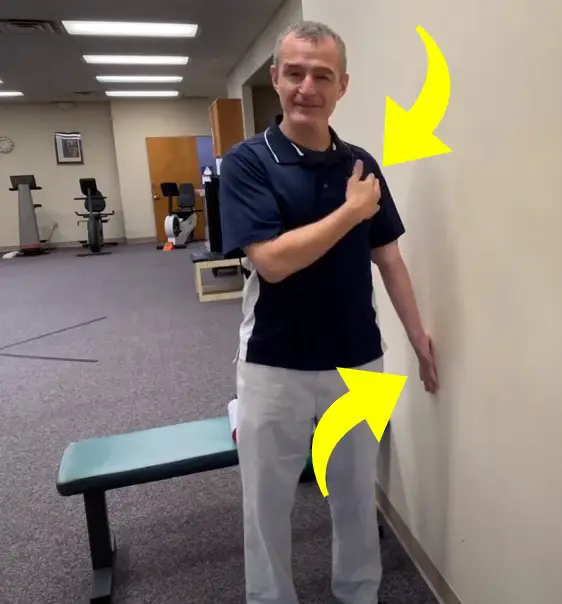
3 Drills to CRUSH your POWER Pickleball Serve
Pickleball is a power sport. Developing a Power pickleball serve requires yuo to be both strong and fast. Power is defined as the amount of work divided by the change in time. In order to improve power, a pickleball player must possess three things: Table of Contents...

Best Shoulder Pulleys for Frozen Shoulder for 2022
This article has been updated on 02/17/2023 by author - Anthony Maritato, PTAre Shoulder Pulley Exercises Good for Frozen Shoulder (Adhesive Capsulitis)? Yes, shoulder pulley exercises are a great way to unfreeze a frozen shoulder. A licensed physical therapist will...
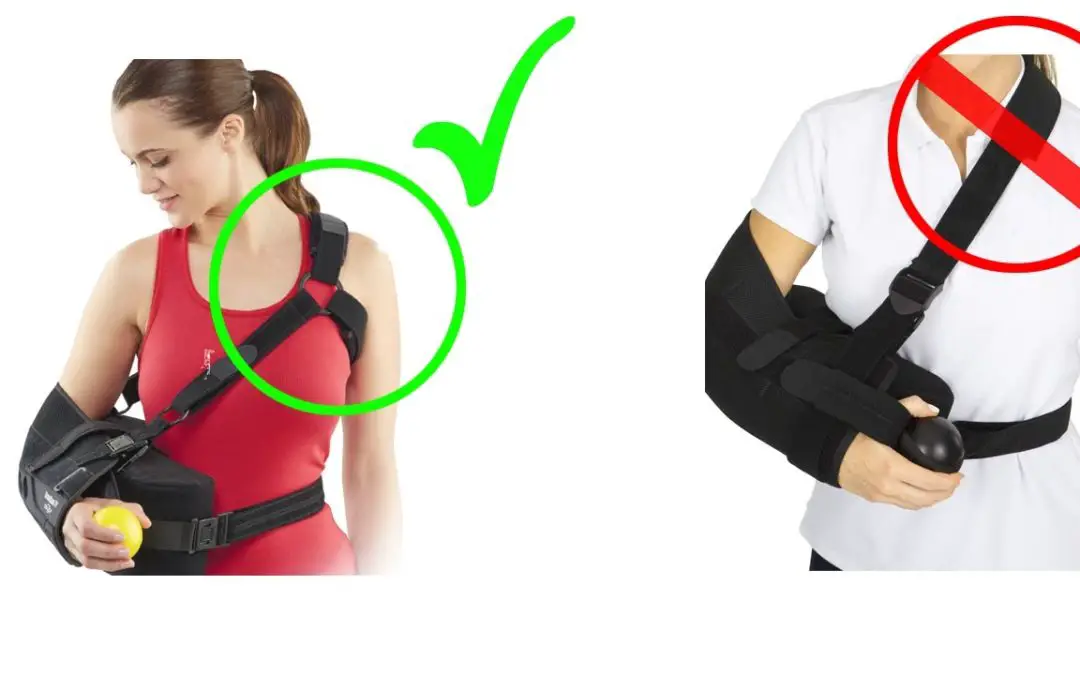
When can I take off my shoulder sling after rotator cuff repair shoulder surgery?
Every surgeon will have a very specific post surgical protocol and instructions telling you exactly what you are allowed to do and not allowed to do after surgery. Most surgeons will require you to wear your shoulder sling after rotator cuff repair shoulder surgery...
2022 Guide to Buying An Elliptical After Total Knee Replacement Surgery
The Schwinn Elliptical 411 is my overall favorite pick for anyone recovering from a total knee replacement in 2022. What to expect in this article: Benefits of using an elliptical after total knee replacement Challenges of using an elliptical after total knee...
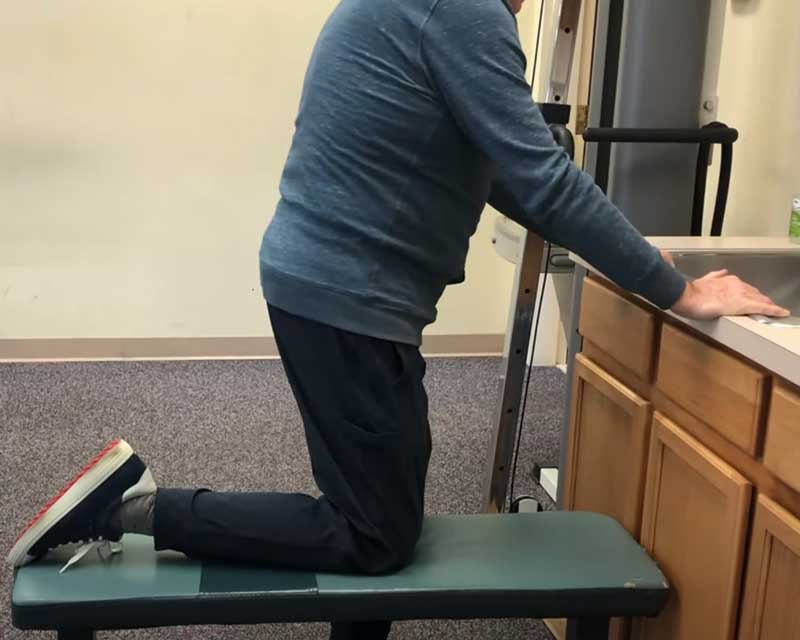
When Is Kneeling Safe After A Total Knee Replacement
Unless your surgeon specifically advised against kneeling you are generally safe to start kneeling after 6-weeks or once your surgical incision is healed.Kneeling After A Total Knee Replacement Depending on the implant and bone quality, kneeling after a knee...
